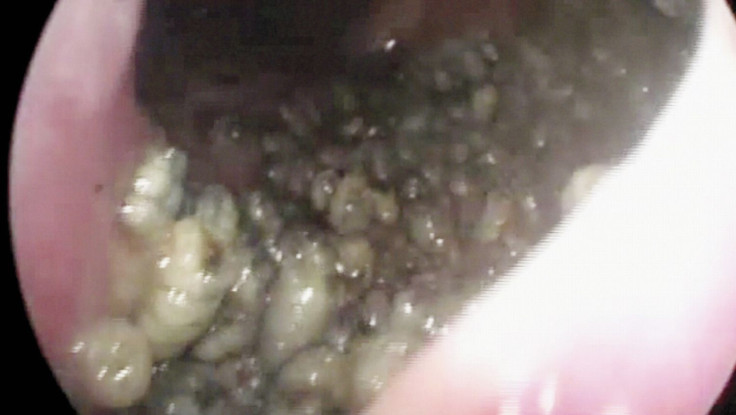HIV-Positive Man With 7-Day Nosebleed Has Over 100 Maggots Removed From Nasal Passage: Nasal Myiasis

Typically, nosebleeds last from a few seconds to more than 10 minutes, requiring a few Kleenexes to clean the bloody mess. However, for a 65-year-old man in Brazil, his nosebleeds did not halt until seven days later when he sought medical attention at the Clinics Hospital in Sao Paulo. It was during a nasal endoscopic examination that doctors learned the trigger for the nosebleeds was the infestation of over 100 maggots (nasal myiasis) in the patient’s left nostril, according to the case study published in The New England Journal of Medicine.
In the doctors’ video, the man’s nasal passage is seen as red, filled with fluid, covered in ulcers with the tissue deteriorating. It took doctors four days to clear the infestation. They had to individually remove the maggots with the use of a guided camera followed by saline solution to wash out the nose. A follow-up two months later showed the man made a full recovery. The maggots were identified as Cochliomyia hominivorax, which are known for feasting on warm-blooded mammals.
Doctors suspect the patient’s onset of nasal myiasis was a result of a nasal inverted papilloma, a tumor he had removed from his sinuses five years ago. The man did not experience any symptoms until this incident suffering nosebleeds, a dull ache in his left nostril, and a foul smell from the maggot infestation. These symptoms, including facial pain, headache, and dysphagia (difficulty swallowing) are common in maggot infestation of the nose, according to Medscape. Doctors were also stunned the patient was not receiving any antivretroviral drugs since he is HIV-positive and had a hepatitis C infection.
This case in Brazil mirrors a case in India, where doctors removed 50 flesh-eating maggots lodged in a 55-year-old man’s nasal cavity. Surgeon Dr. Meenesh Juvenkar spent a total of two hours removing the maggots, which had grown to be about a centimeter in length after feeding off the man’s nose. Doctors filmed the procedure, which showed the maggots wriggling in a metal bowl upon removal. The man also made a full recovery.
Nasal myiasis is more prevalent in those with old age, low socioeconomic status, and poor nutritional status.



























